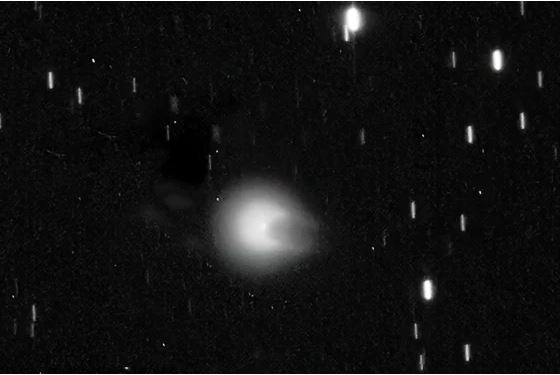A comet known for its two distinct horns of gas and ice is on its way to the inner solar system and might become visible to the naked eye by early next year.
The "devil comet," formally known as Comet 12/P Pons-Brooks, will reach its perihelion (the point in its orbit closest to the sun) by April 21, 2024, and will not pose a threat to Earth despite its ominous name.

Comet from Hell
The comet has a nucleus of almost 20 kilometers or more than twice the size of Mount Everest. Astronomers have observed that the comet erupted twice in the past four months - once in July and another one earlier this month. On both occasions, the comet brightened significantly and spewed clouds of gas and icy debris that looked like two matching horns, or for Star Wars fans, the starship Millennium Falcon.
Amateur astronomer and retired University of Arizona plant sciences professor Eliot Herman told NBC News that he captured stunning images of the comet and its devil horns using two remote telescopes in Utah.
He added that the comet's "horns" were thought to originate from icy eruptions within the comet, which surrounded the comet in a bright cloud of gas known as coma. The nearer it gets to the sun, the longer its coma will be due to solar wind.
However, Herman said the precise reason why Pons-Brooks was erupting in such a way as it does has not yet been well understood.
"By observing this more intensely we might resolve this question, and there is a community of observers who are studying this," he said.
Massive 'Devil Comet' with ice volcano and 'horns' to light up Earth skies https://t.co/LLAZicRhO3
— FOX 29 (@FOX29philly) October 29, 2023
Future Sightings
A few weeks before reaching its perihelion, Pons-Brooks might be visible to the naked eye during a total solar eclipse scheduled to happen on April 8.
The comet's nearest approach to Earth would happen on June 2. Depending on weather conditions, it could be bright enough to be seen with the naked eye.
Comet 12/P Pons-Brooks was discovered in 1812 by a French astronomer, Jean-Louis Pons. The object was observed again in 1883 by astronomer William Brooks.
Pons-Brooks's orbit around the sun takes 71 years to complete.
© 2025 HNGN, All rights reserved. Do not reproduce without permission.








